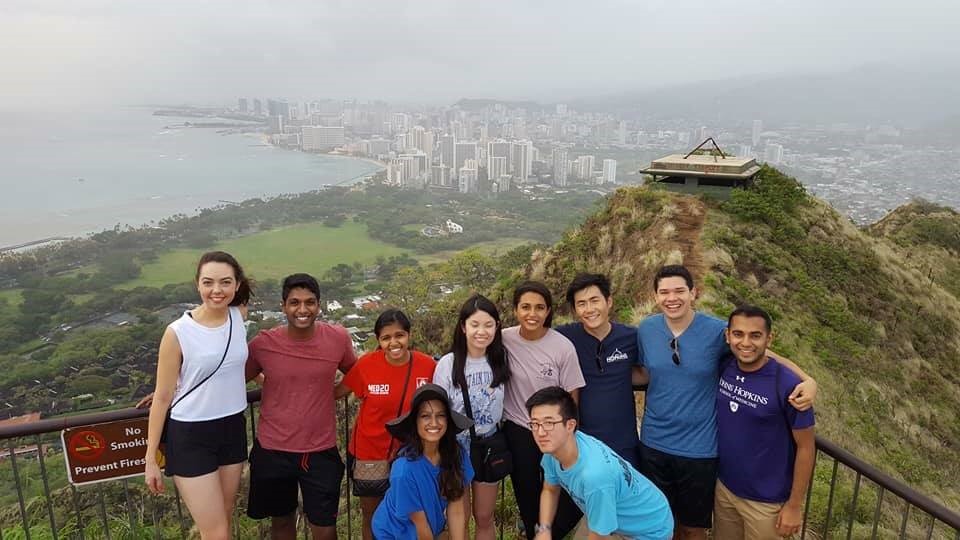Aloha! Being a medical student has its perks. Over the past semester, my medical school experiences have taken me across the country. I’ve traveled to various conferences in Chicago, Washington, D.C., Boston, and this month, Hawaii, where I attended the American Medical Association (AMA) Interim Meeting in Honolulu. The AMA is the largest coalition of physicians in the United States, and it serves as a system of leadership among medical practitioners while providing a voice for physicians to take stances on legislative policies that advocate for both physician and patient interests.
As a student, I am involved in the Medical Student Section (MSS), a subset of the AMA that gives students an opportunity to write and pass internal legislation and discuss and define the student section’s stances on current health care topics. This year, the Johns Hopkins School of Medicine was able to send more than a dozen motivated students to this conference, a high number compared with most other schools, which usually send fewer than five students. Students from our school wrote more than 20 pieces of legislation called “resolutions” for the AMA-MSS to discuss and debate, and our students were elected to various leadership positions across the AMA.
Overall, Johns Hopkins University School of Medicine students are able to positively impact the AMA because of their interest and dedication. More than 200 students from across the country attended the conference to discuss legislation, network with physicians and peers, and spend time with friends. The full student assembly primarily met to debate resolutions and decide which resolutions to approve into the AMA-MSS bylaws.
Immediately Influencing AMA Policies
One resolution in particular, urging the AMA to oppose the presence of ICE (Immigration and Customs Enforcement) officers in hospitals, was one of the most incredible displays of the power of student voices. This resolution, initially pushed forward by a group of students, was voted on and passed at the Medical Student Section level, and then was immediately forwarded to the larger AMA House of Delegates, where it was subsequently passed at the same meeting. This then became official AMA policy, and almost immediately, national news outlets began reporting that the AMA had taken an opposition stance on ICE in hospitals, largely thanks to highly dedicated students. Students can truly make an impact.
Networking Abroad
Being in Hawaii, there was just as much to do outside the meeting. The AMA-MSS leadership organized dinners and networking events for medical students from different schools to meet one another. My classmates and I also spent our free time hiking and enjoying the outdoors. We climbed Diamondhead and Koko Mountains, snorkeled in Hanauma Bay, and rented a car to travel to the North Shore for cliff jumping and sightseeing. It was my first time in Hawaii, and everything was absolutely gorgeous.
Meeting students from across the country, hearing their passions and spending time on the beautiful beaches of Hawaii as winter approaches in Baltimore, all while learning more about health policy, was extremely rewarding and worthwhile. Even more valuable was building strong coalitions with my fellow Hopkins peers on the trip — these friendships and memories will carry far beyond medical school and blossom into lifelong professional and personal partnerships. I’m sad that the trip came to a close, but am extremely grateful for the opportunities that being a medical student has afforded me.
